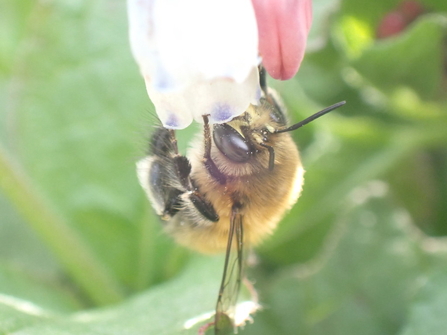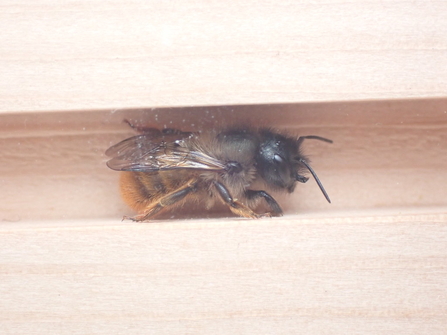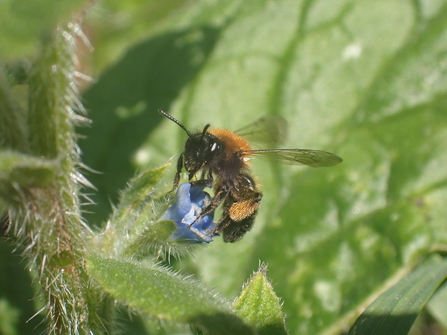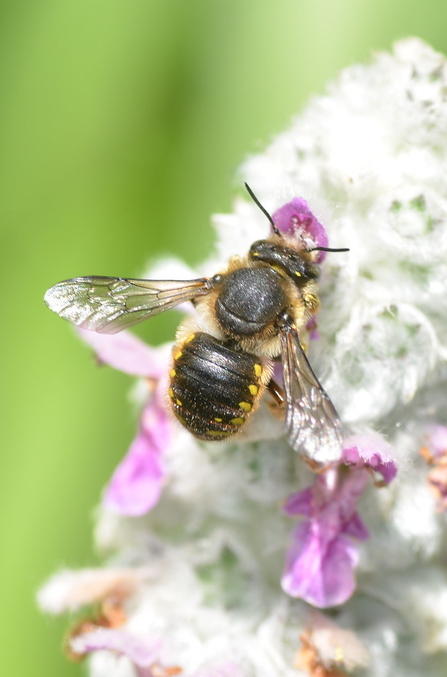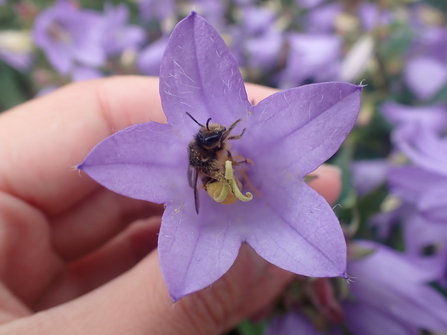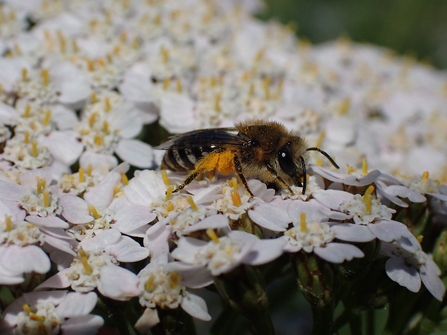Spring bees
The Hairy-footed Flower Bee (Anthophora plumipes)
One of the first bees to be seen in the year, the hairy-footed flower bee is a bumblebee-like solitary bee. Nesting in old cob walls, females create little burrows containing eggs provisioned with nectar and pollen. Aptly named, male hairy-footed flower bees have feathery hairs on their middle legs, which they display during mating.
Plump and furry, hairy-footed flower bees can be easily mistaken as a bumblebee. Look out for their zippy flight and high-pitched buzz! Males have brown fur with yellow ‘masks’ on their faces. Females have black fur with orange pollen hairs on their hind legs.
Hairy-footed flower bees have a particular sweet tooth for pulmonaria, a fantastic early-flowering plant and an ideal pollinator plant to have if you have a shaded garden. From March to May, look out for these zippy bees on the pulmonaria by Gosling Sike’s wildlife pond. Males can be seen whizzing around this patch in search of females.


